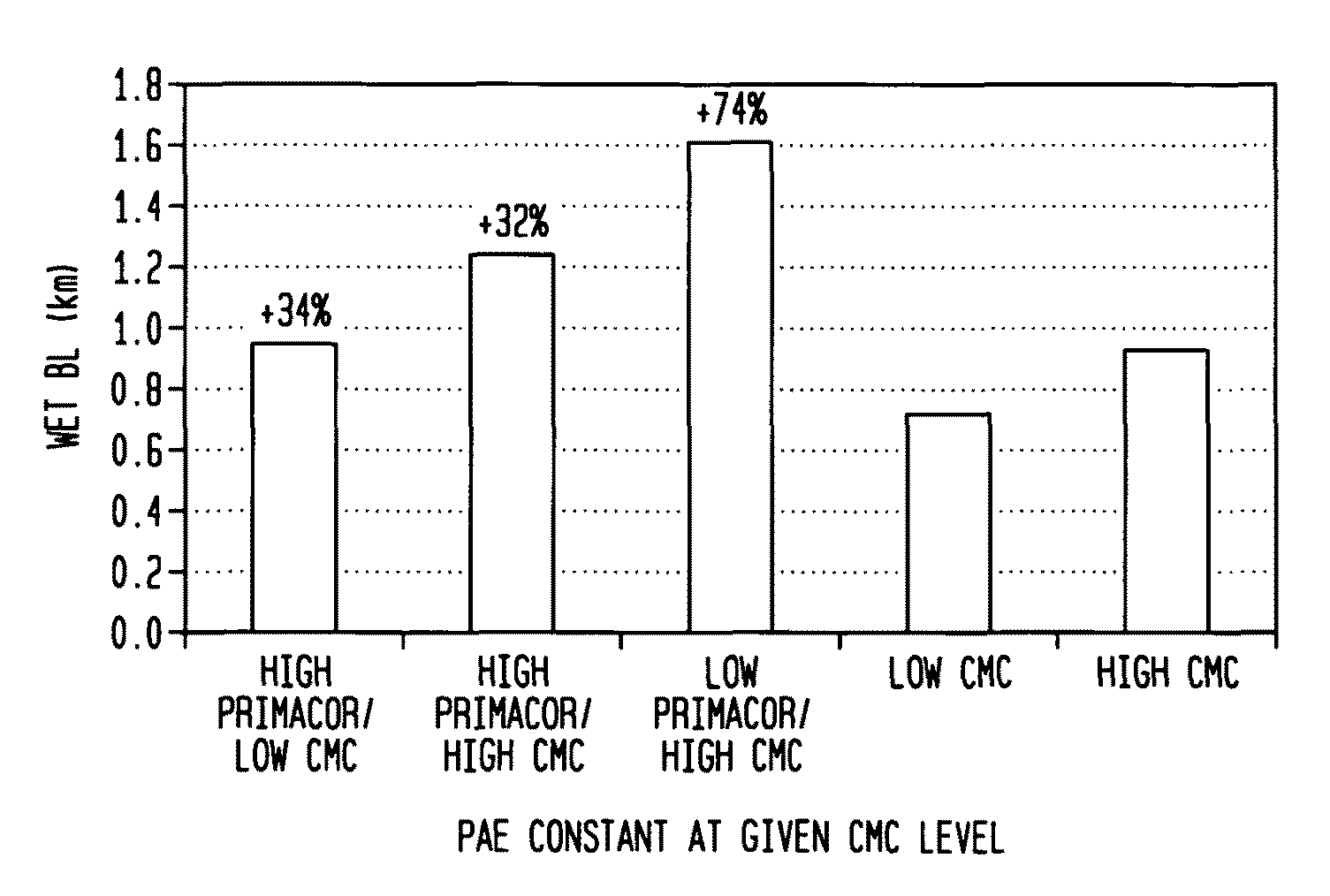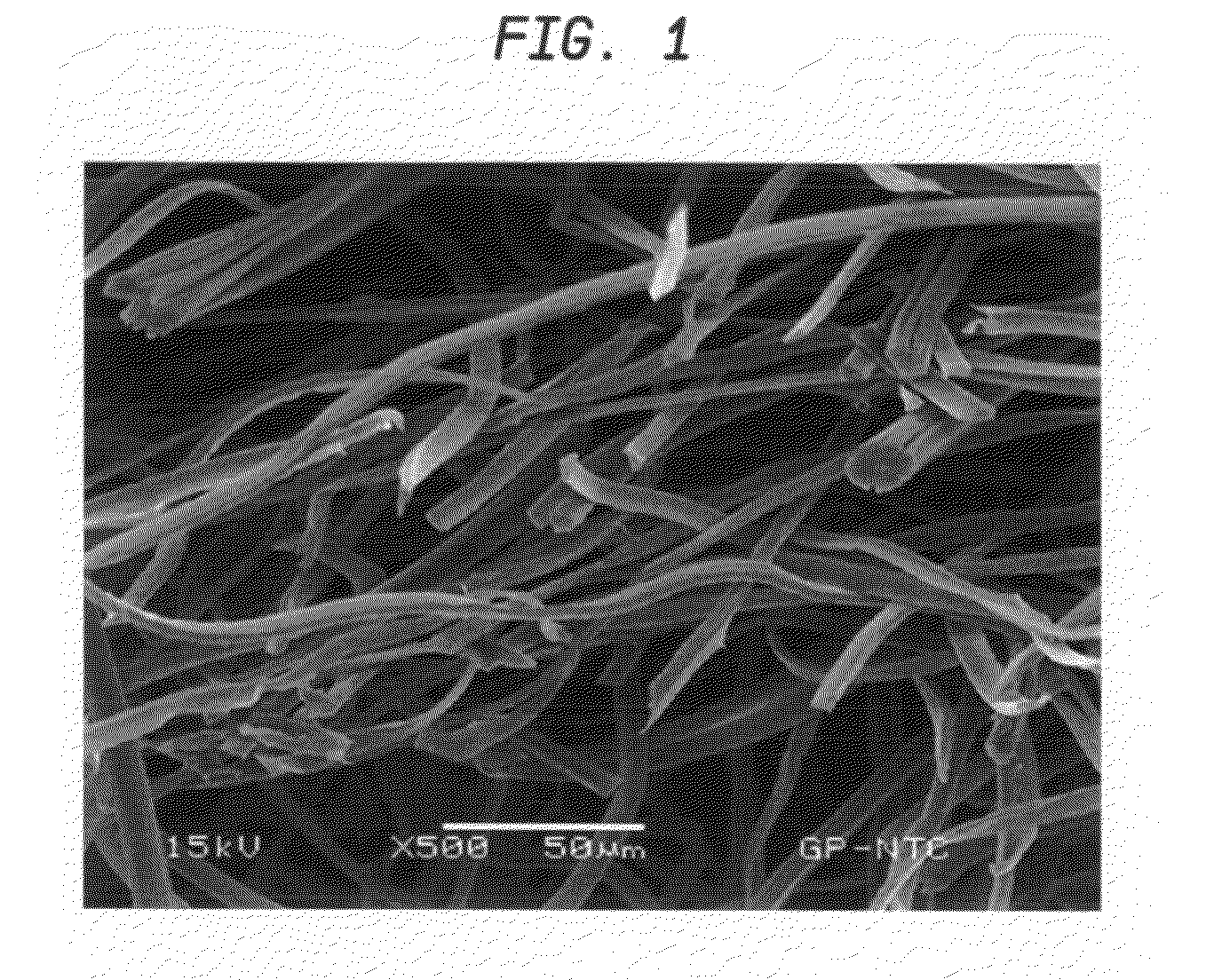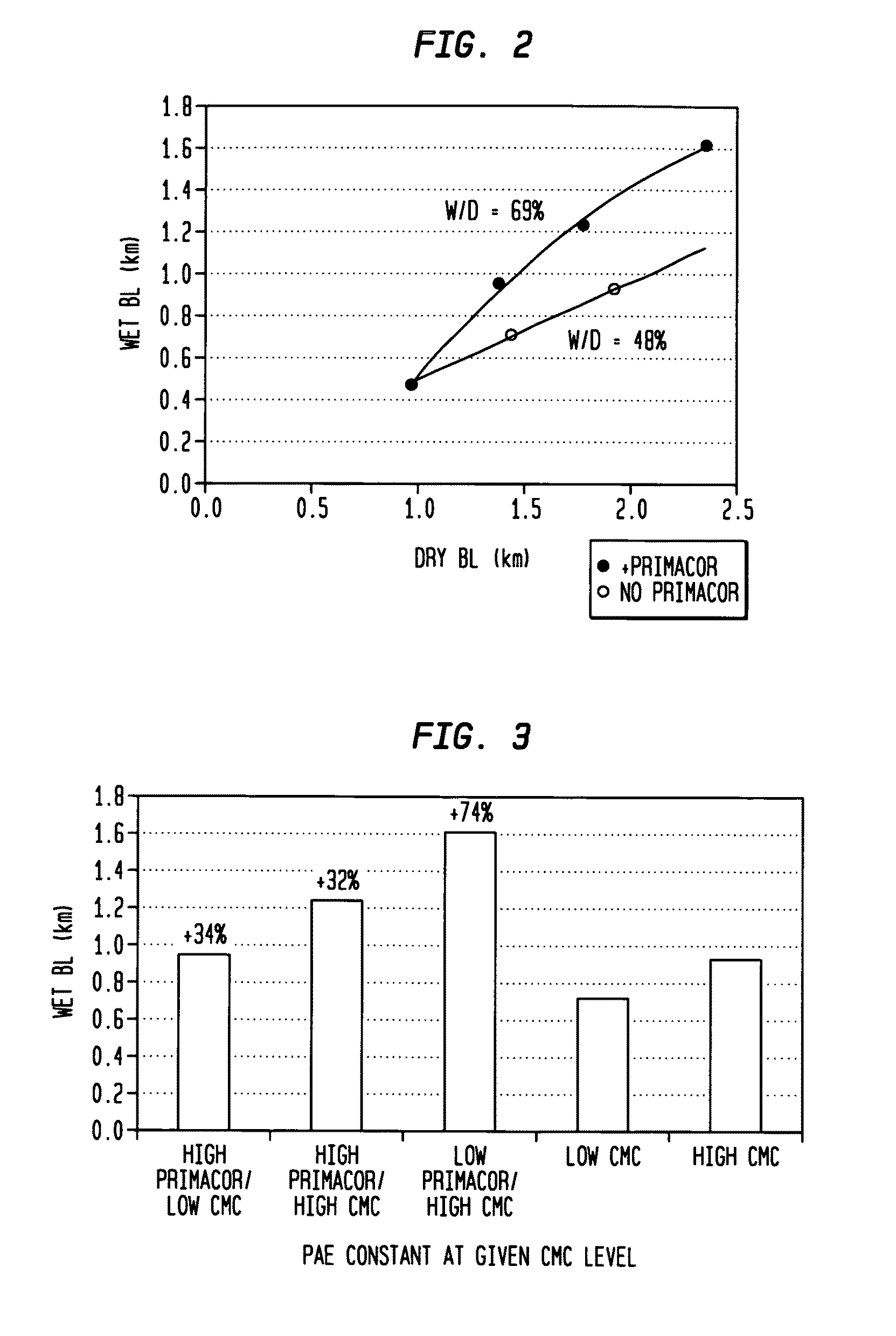Absorbent sheet prepared with papermaking fiber and synthetic fiber exhibiting improved wet strength
a technology of papermaking fiber and absorbent sheet, which is applied in the field of absorbent sheet, can solve the problems of inability to produce on conventional high-speed paper machines, lack of wet strength of products with mixtures of pulp-derived papermaking fiber and synthetic fiber, and relatively difficult and expensive production of existing products, etc., and achieve the effect of increasing the wet/dry tensile ratio of sheets
- Summary
- Abstract
- Description
- Claims
- Application Information
AI Technical Summary
Benefits of technology
Problems solved by technology
Method used
Image
Examples
examples
[0051]One preferred bicomponent is a polyester / nylon 16 segment pie-wedge cross-section having a denier of 2 g / 9000 m. The fiber is cut to 2 mm and processed in a Jordan refiner prior to use. A typical batch was about 8.3 lb fiber in 400 gallons of water (0.25% consistency) with 4 net HP applied for about 45 minutes. 10 ppm Rhodameen® dispersant was added. Table 1 shows the average FQA parameters (OpTest Equipment, Hawkesbury, Ontario, Canada) after splitting in the Jordan. Fiber length was significantly shortened in the splitting process. FIG. 1 shows that a high level of splitting was achieved.
[0052]
TABLE 1Average FQA Parameters for Split Bicomponent FiberFQAFQAFQAFQAKinks / FQAFib LenFib LenFib LenFQAFQAFQAFQAFQAKinkmmFiberLnLwLzFine LenFine LenCurl IndCurl IndKinkAngleKinks / WidthmmmmmmLn %Lw %LnLwIndexdegreemmum0.510.991.35367.10.330.353.4791.415
Handsheet Procedure and Resin Preparation
[0053]A 5 g (oven dry weight) sample of micro fibrillated nylon / polyester bicomponent fibers was...
PUM
| Property | Measurement | Unit |
|---|---|---|
| effective diameter | aaaaa | aaaaa |
| effective diameter | aaaaa | aaaaa |
| diameter | aaaaa | aaaaa |
Abstract
Description
Claims
Application Information
 Login to View More
Login to View More - R&D
- Intellectual Property
- Life Sciences
- Materials
- Tech Scout
- Unparalleled Data Quality
- Higher Quality Content
- 60% Fewer Hallucinations
Browse by: Latest US Patents, China's latest patents, Technical Efficacy Thesaurus, Application Domain, Technology Topic, Popular Technical Reports.
© 2025 PatSnap. All rights reserved.Legal|Privacy policy|Modern Slavery Act Transparency Statement|Sitemap|About US| Contact US: help@patsnap.com



